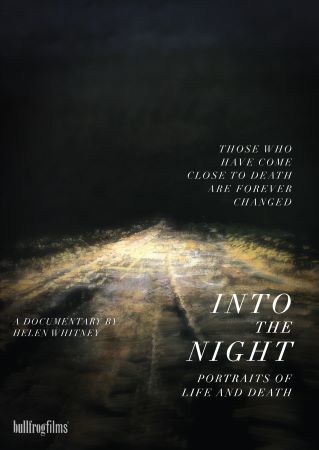
Into The Night: Portraits of Life and Death 2021
Distributed by Bullfrog Films, PO Box 149, Oley, PA 19547; 800-543-FROG (3764)
Produced by Helen Whitney and Katie Taber
Directed by Helen Whitney
Streaming, 242 mins
High School - General Adult
Death; Philosophy; Psychology
Date Entered: 05/16/2022
Reviewed by Joseph Baumstarck, Jr., University of Louisville, Southern Baptist Theological Seminary, Ivy Tech Community CollegeInto the Night is a thought-provoking, sensitive, and monumental documentary looking at views of death and dying from many different perspectives. Although quite lengthy at 242 minutes, this two-part documentary is well worth the time required to watch it. Death and dying are approached as a likely (not necessarily inevitable) end for everyone and something that everyone has considered. Unlike many films in this genre, Into the Night does not focus mainly on the near-death experience of survivors (although it includes a few of these as well) but on the thought processes of people as they approach their impending deaths or the philosophical thoughts various people have about death and dying. Many people mentioned in the film are just months away from their journeys into the night, but others are in their prime and philosophize on death and dying.
The mix of people focused on gives this documentary its primary appeal. People come from all walks of life and all life stages. Views included are those of a cremation worker, storyteller, astrophysicist, former radical Islamist, cryonicist, a near-death experiencer, religious historian, pastor, heart surgeon, philosopher, scientist, futurist, seeker, physician, healer, scholar, artist, photographer, small-town trustee, pharmacist, Buddhist devotee, chaplain, and recovering addict. The subjects' ages range from the early twenties through the nineties, with most subjects in their fifties and sixties. Religions specifically mentioned include Islam, Atheism, Agnosticism, Christianity, Buddhism, and Judaism. The loss of someone significant to them, genocide, or personal illness incentivizes most subjects in the film to address death and dying. Thus, there is an intensely personal quality to the documentary. The documentary allows each person to present their views on death and dying in their own language and at their own pace with little interference from the producers. This allowance contributes to the film's length but is a tradeoff that is more than acceptable because of the richness and nuance this provides.
Into the Night is highly recommended without any reservations. There will be few viewers who can walk away from this film unchanged in some fundamental way. Even viewers who have spent considerable time thinking about death and dying will find new insights and viewpoints regarding an exceedingly complex subject. Any library serving high school students through adults should consider this film for their collection. The wide range of views expressed makes this film ideal for almost any setting where a discussion of death and dying is considered, from highly academic settings to an interested general public. The non-sensational yet thought-provoking and sensitive manner of discussion of death and dying occurring in the film is a breath of fresh air in opposition to the often brazen, domineering, and blaring way death and dying are discussed.
Awards:National Broadcast on PBS; Austin Film Festival; Chagrin Film Festival; Hamptons Documentary Film Festival
Published and licensed under the Creative Commons Attribution 4.0 license. Anyone can use these reviews, so long as they comply with the terms of the license.